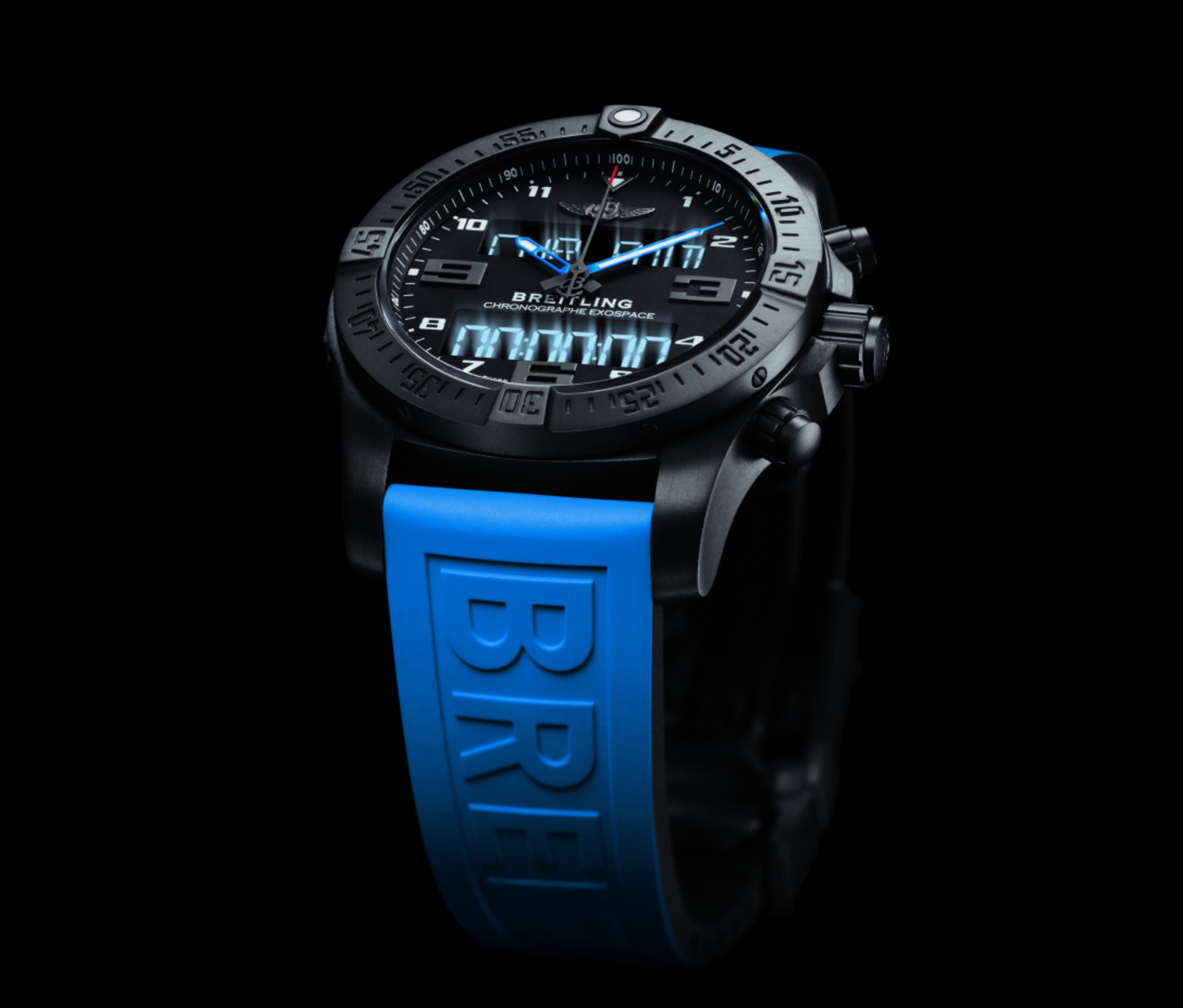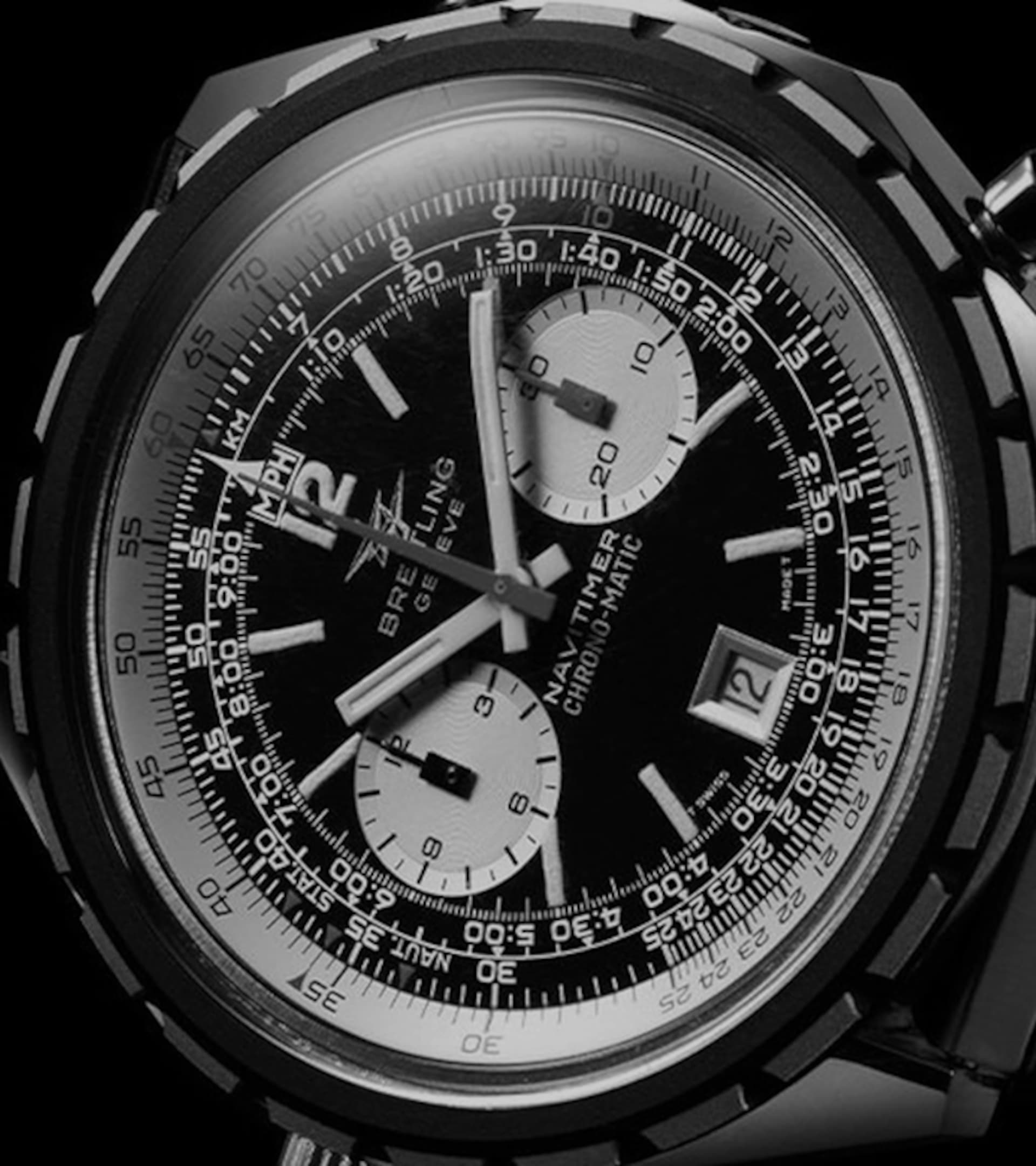

1970s-2010s
CHAPTER 4: INSTRUMENTS FOR PROFESSIONALS
INSTRUMENTS FOR PROFESSIONALS
Chapter 4
In the late 1970s, the “quartz crisis” shook traditional watchmaking. The quartz watches flooding the market proved more precise, reliable, and affordable than mechanical timepieces, forcing many brands out of business. Despite his declining health, Willy Breitling refused to enter a merger as other companies were doing to weather the storm. Instead, he sought a successor who would preserve Breitling’s independence. In 1979 he found that person in aviation enthusiast and quartz specialist Ernest Schneider. Over the next 40 years, the Schneider family would steer Breitling toward a specialization in “Instruments for Professionals”—high-performance, durable watches, many of them quartz-based. But Schneider would also play a key role in reviving mechanical watches with his 1984 Chronomat, a revolutionary timepiece that set the stage for the industry’s comeback.
1979
ERNEST SCHNEIDER
Ernest Schneider took over Breitling on April 5, 1979. A pilot and former head of the Sicura watch company, he brought expertise in pioneering solar-celled and quartz technology. A longtime Breitling admirer, Schneider saw the brand’s potential and secured its future.
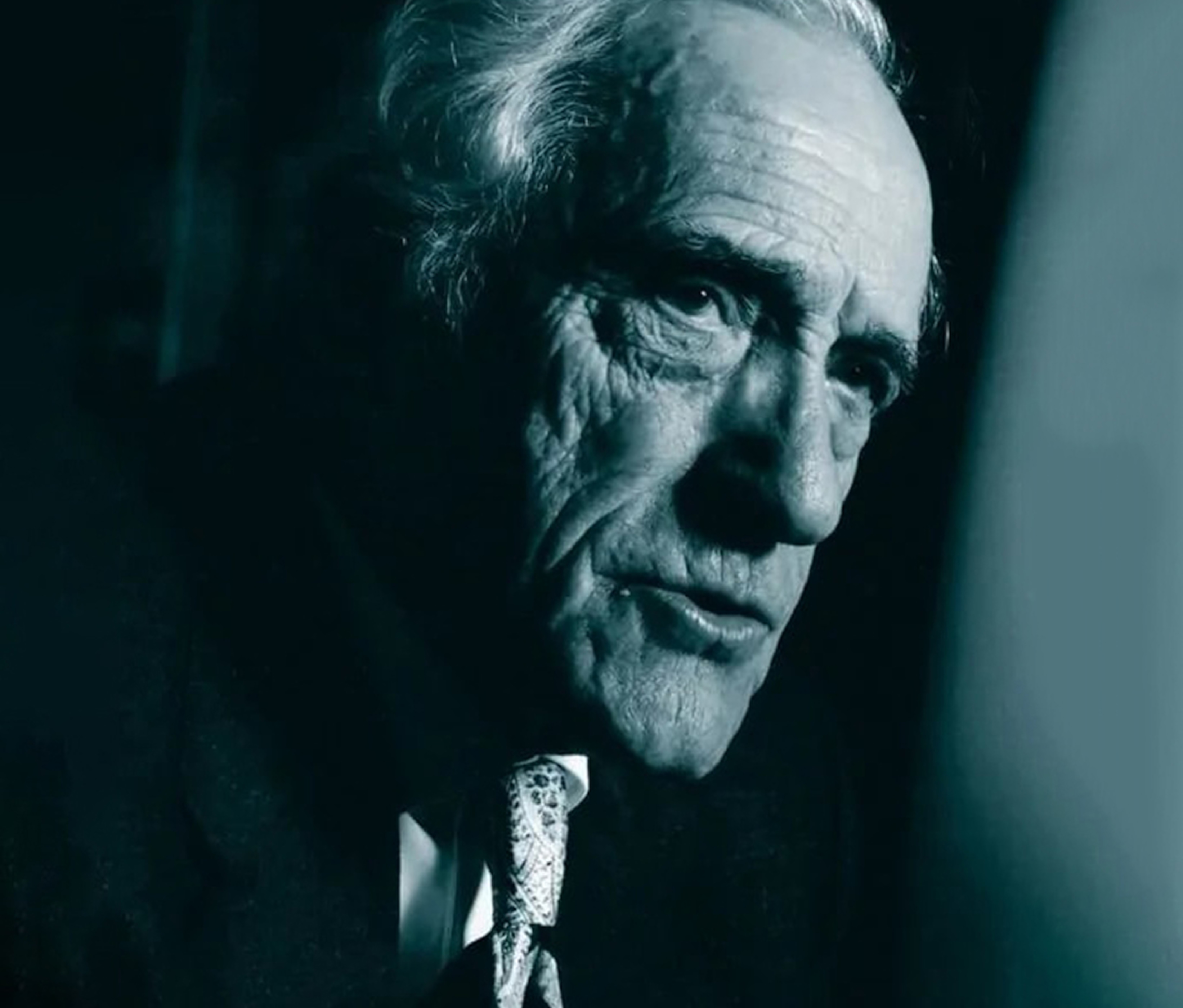

EARLY 1980S
INSTRUMENTS FOR PROFESSIONALS
Unlike many in the industry Schneider saw quartz as an opportunity, not a threat. Not only did it offer the precision professionals needed, but the crisis had turned mechanical watchmaking into a niche with far fewer competitors. Breitling’s new era embraced both, using quartz for high-performance reliability while bolstering the prestige of mechanical watchmaking. The brand’s “Instruments for Professionals” tagline defined this dual approach.
1983
FRECCE TRICOLORI
Schneider learned that one of the world’s most prestigious aerobatic teams, Italy’s Frecce Tricolori, was issuing an invitation to tender for its official watch. In 1983, Breitling seized the opportunity to reaffirm its aviation legacy by creating the team’s dedicated chronograph. Favoring an analog display, the pilots wanted their watch to be mechanical. After painstakingly studying the team at work, Breitling’s resulting design introduced a rotating bezel with four rider tabs at the 15-minute marks to protect the crystal in the tight confines of the cockpit and a comfortable metal Rouleaux bracelet that wore well on or off duty. Both features would become signature features a year later when the design was released widely as the Chronomat.
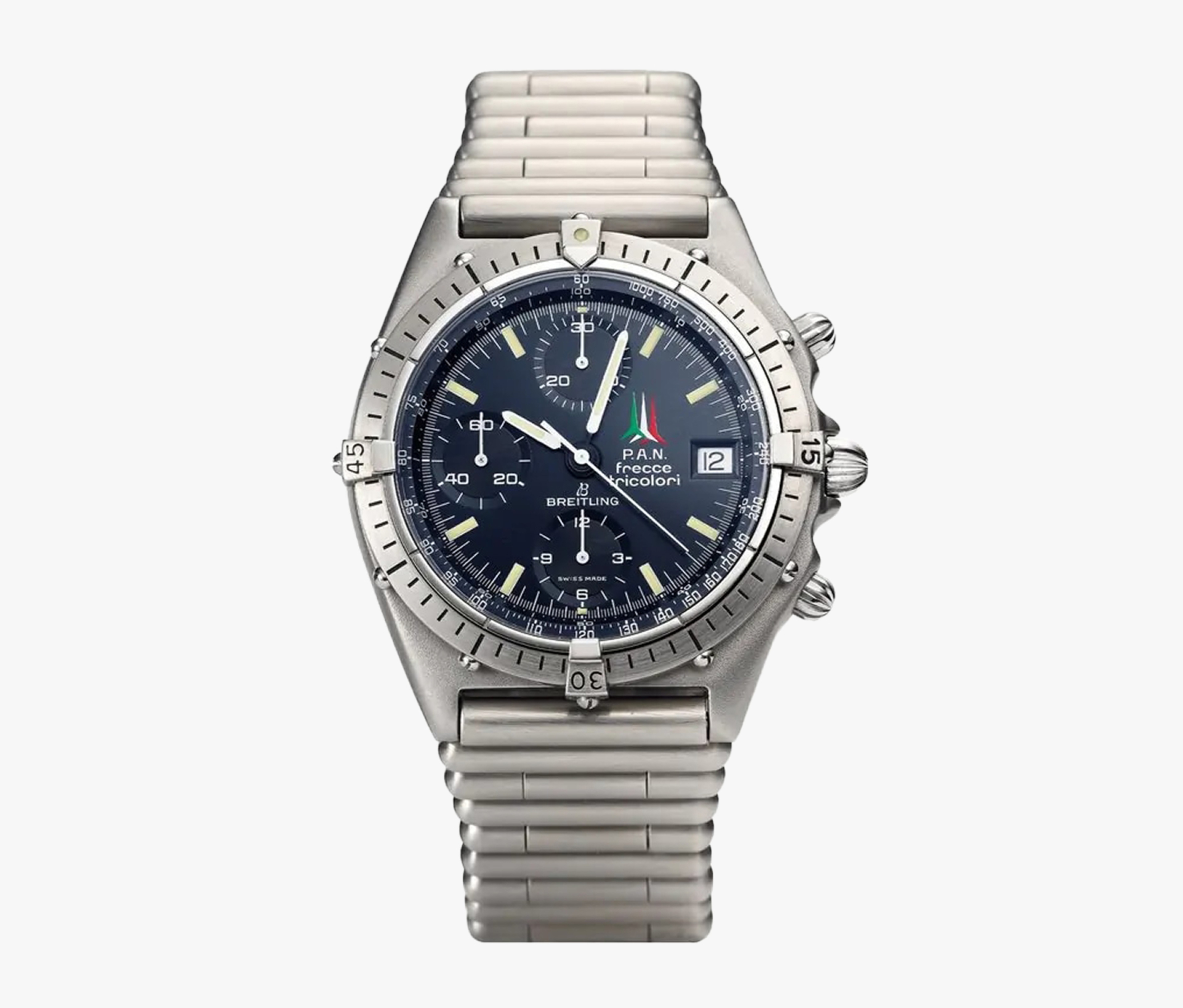

The removable rider tabs on the bezel were made to protect the crystal from impact when pilots opened the canopy of their aircraft.
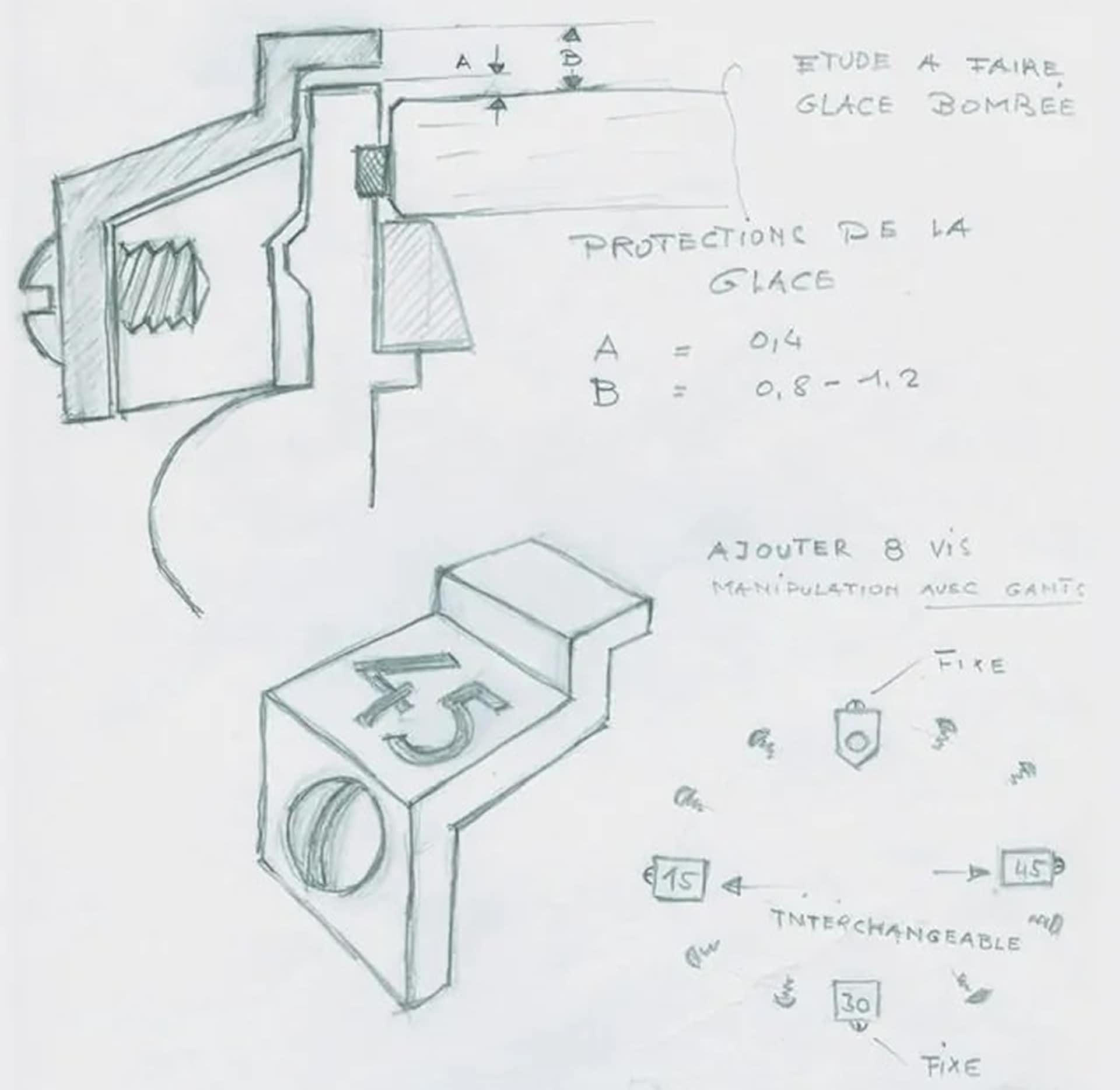

1984
MECHANICAL WATCH RENAISSANCE
For its centennial, Breitling launched the Chronomat, reigniting the mechanical chronograph’s popularity. Inspired by the 1983 Chronograph “Frecce Tricolori,” it featured distinctive rider tabs and a bold design that defied the quartz trend. Its larger size contrasted with the era’s slim quartz watches, but the gamble paid off, with the Chronomat thriving in key markets like Italy and the U.S., bringing mechanical chronographs back in vogue.
1985
AEROSPACE
The brand’s dual philosophy was to continue Breitling’s mechanical tradition while also taking advantage of the latest electronic improvements to enhance the user’s experience. The introduction of the multifunctional Aerospace chronograph in 1985 was a brilliant illustration of how this could be accomplished. This completely innovative quartz model, equipped with the latest generation Swiss technology, had a double display—analog and digital—and its dial contained two LCD screens.
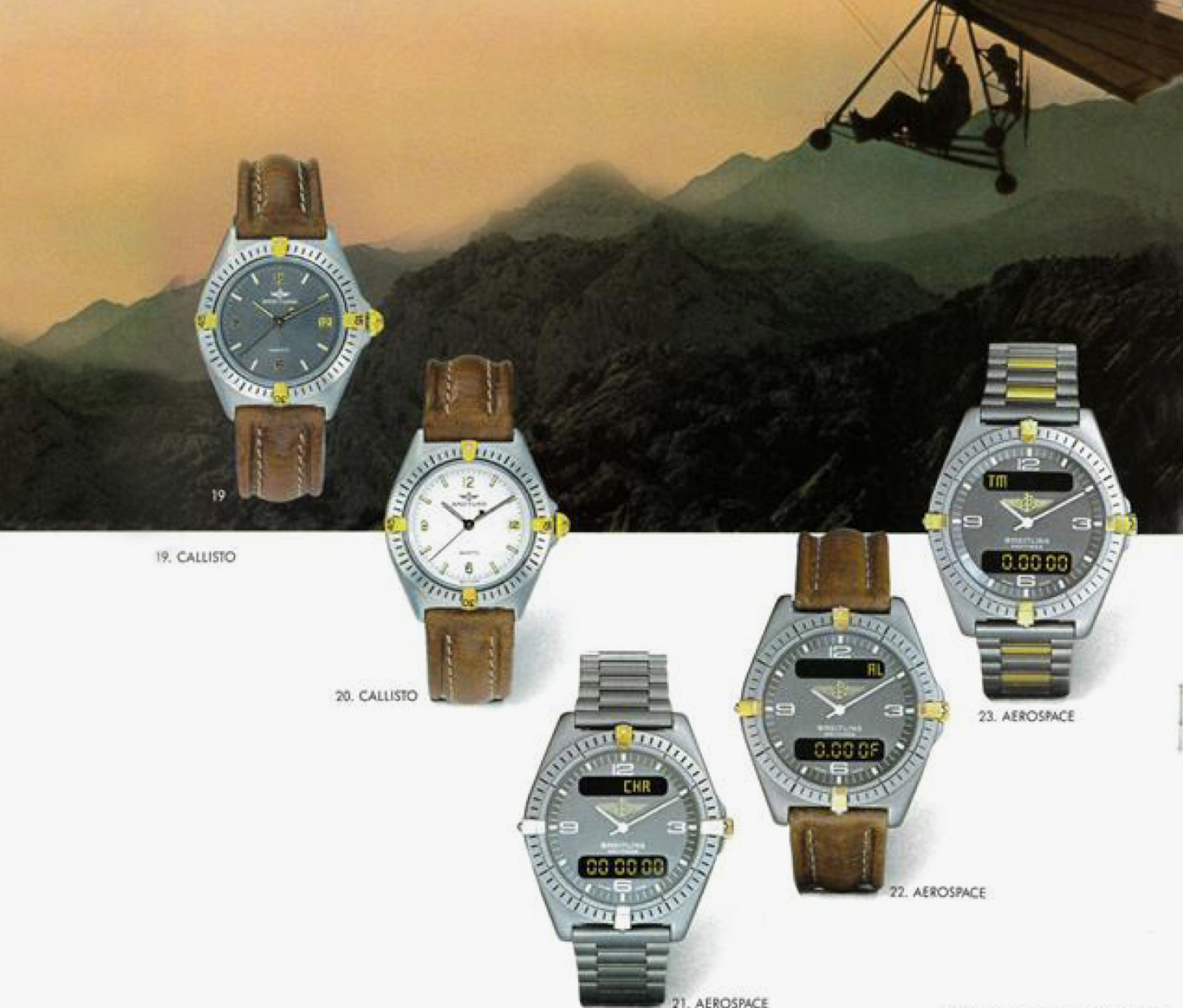

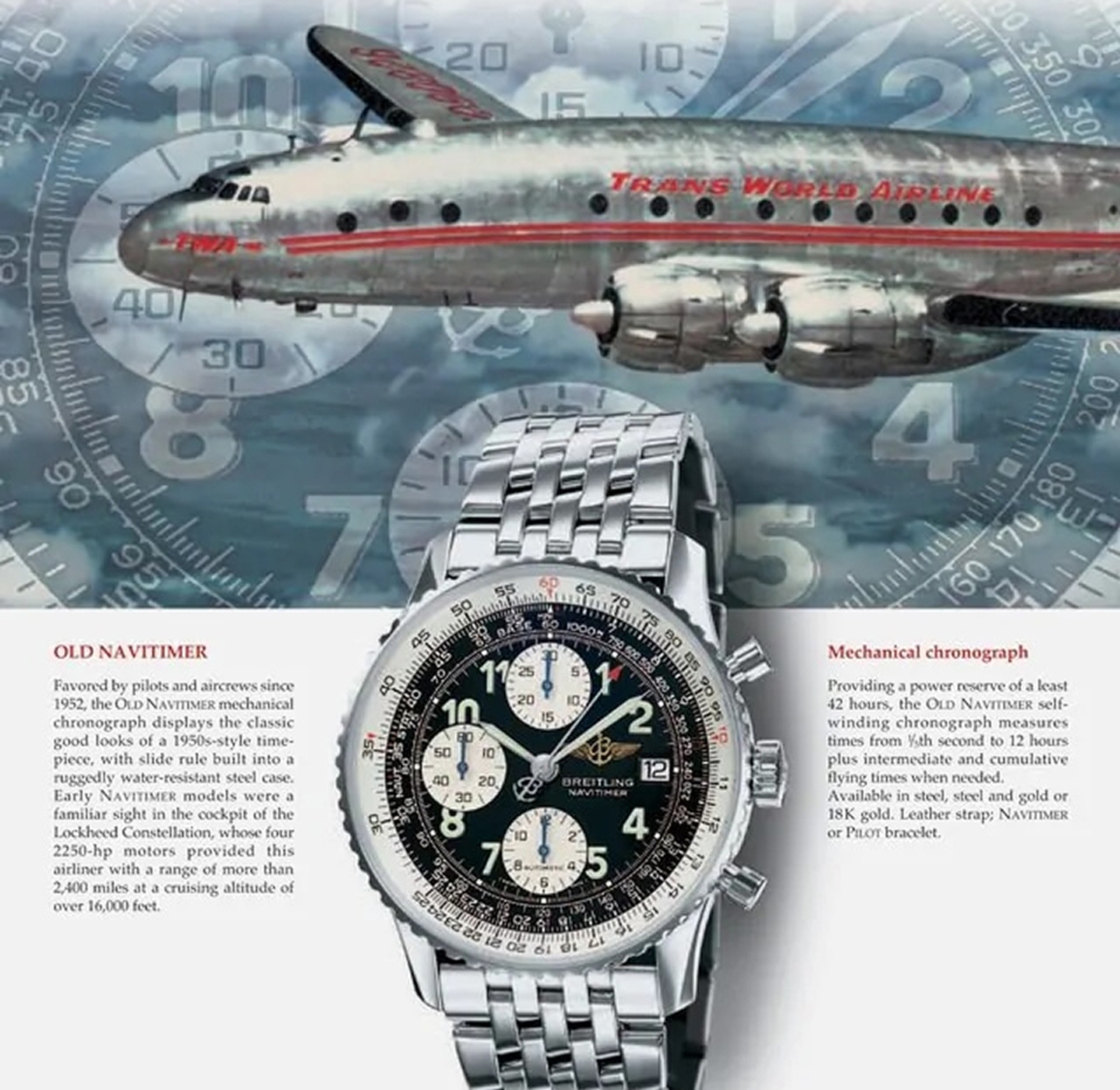

1986
NAVITIMER REVIVAL
The brand launched the Old Navitimer, a reinterpretation of the original design developed in 1952. It was equipped with an automatic Valjoux movement. Because of its rich history and elegant design, this piece further contributed to the return of the mechanical chronograph.
1994
THEODORE SCHNEIDER
Ernest Schneider officially turned the business over to his son, ushering in the fifth generation of leadership at Breitling. Theodore Schneider had already been with the company for several years and led a small, not very hierarchical team in comparison to other large watch companies of the day. His corporate structure allowed for efficiency, performance, and quick decision-making that would prove crucial in the years to come.


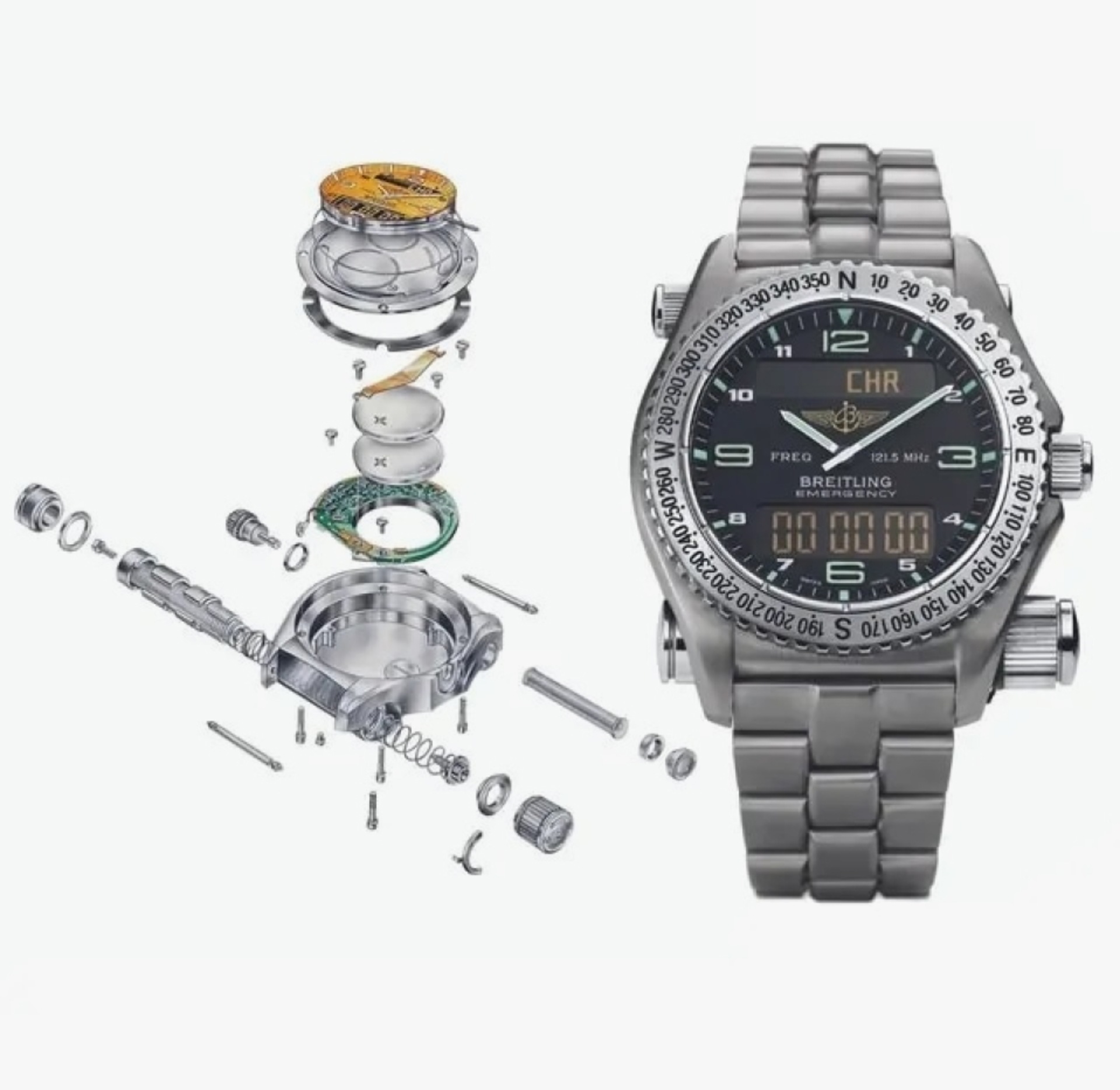

1995
A WATCH THAT SAVES LIVES
The Emergency was the first wristwatch to be equipped with an integrated emergency locator transmitter (ELT). It was initially launched in 1988 with a single antenna but truly came into its own in 1995 with the introduction of an ingenious patented antenna deployment system. The model’s micro-ELT, which was locked onto the international air distress frequency, was equipped with two antennas and had a 48-hour independent power reserve. To develop this technology, Breitling worked closely with Dassault Electronique, the specialized division of the famous French aircraft manufacturer.
Legend has it the idea for the Emergency came up during a conversation between Ernest Schneider and a NATO official who mused that air and sea crews would benefit from an emergency transmitter that could be worn at all times, like a watch. Soon after, Schneider set to work on that very thing.


2013
SAVING LIVES: THE EMERGENCY II
Breitling upgraded the Emergency with the world’s only built-in dual-frequency international distress beacon that could be worn on the wrist. The watch was quickly adopted by authorities as a tool for first responders to coordinate search-and-rescue operations anywhere on the planet.
2015
EXOSPACE B55
The Exospace B55 combined the appeal of a wristwatch with smartphone connectivity. Its black titanium case and rubber strap embodied Breitling’s tradition of stylish tool watches. The watch’s settings—time, time zones, and alarms—could be adjusted via smartphone, while digital displays notified wearers of calls, emails, texts, and appointments. Despite a change in ownership, the Schneiders continued Breitling’s legacy of innovation, creating high-quality watches with style and performance. The brand’s pioneering spirit carried on, setting the stage for a more connected and sustainable future.
